Minestrone Soup Recipe
Minestrone Soup is a tasty and hearty one pot meal. Packed with vegetables and beans plus pasta, you can adapt the ingredients according to the seasons and whatever you have in your fridge and cupboards. This winter version includes carrots, potatoes, kale (you can swap in courgettes during summer), plus borlotti beans, and tiny star pasta.
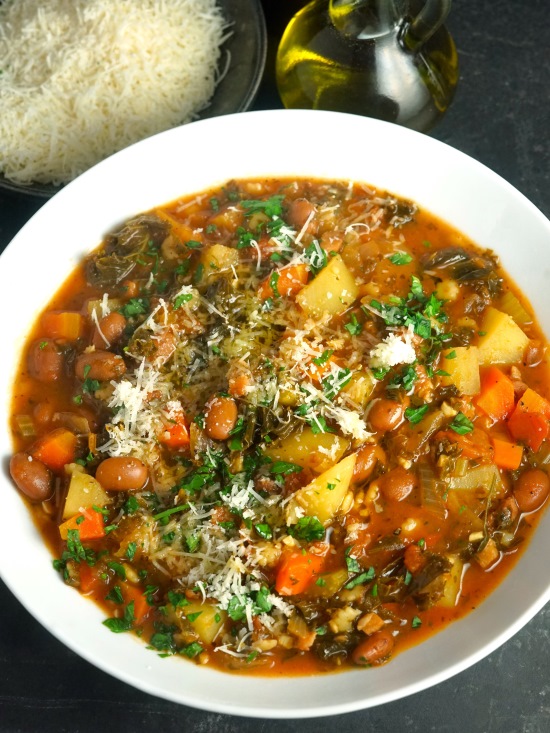
Flavoured with garlic plus herbs like rosemary and oregano (try lots of basil in summer), plus pancetta or bacon, all it needs is a scattering of cheese and a drizzle of olive oil over each bowlful, and you have a satisfying, nutritious lunch or dinner.
Jump to Recipe
Minestrone Soup must be one of the best-known Italian soups outside of its homeland. But if you’ve only ever had it from a tin, you haven’t eaten the real thing. Because when it’s made at home, packed with fresh vegetables, beans and pasta, full of flavour from herbs and garlic, Minestrone Soup can be a filling, delicious, and satisfying delight.
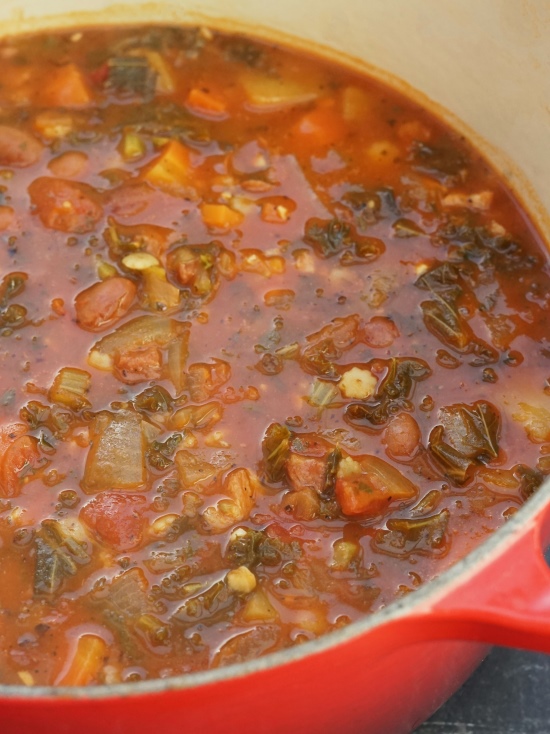
Its name translates, quite literally, as ‘big soup’. While the lighter minestra and minestrina might be served at the beginning of a meal, chunky minestrone is a one bowl meal all on its own. In our house it’s often served in a large portion for dinner with the rest snaffled up for lunch the next day.
ADAPTABLE MINESTRONE SOUP
I think one of the great things about Minestrone is its adaptability. You can change what you put in it depending on the seasons and what you have in your fridge and cupboards. In Elizabeth David’s classic Italian Food (1954) she gives five different recipes. Among the vegetables included are peas, beans, spinach, leek, courgette, cabbage, potato, turnip, carrots, celery, broad beans, French beans, asparagus, and cauliflower. As she says, ‘According to the season almost any vegetable can be added to a minestrone.’
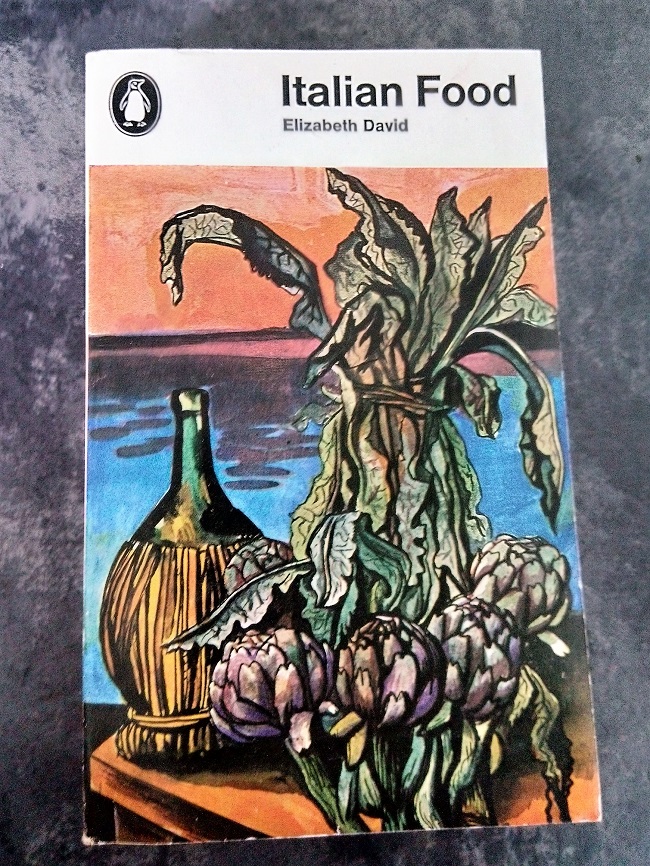
The constants are onion, garlic, and herbs such as parsley, sage, thyme, basil, marjoram, ‘or whatever may be available’. Apart from pesto-flavoured minestrone Genovese, most contain tomatoes plus a little meat for flavour. This could be ham, sausage, bacon, or even just bacon rind. Most include beans such as haricot and usually small pasta shapes or broken spaghetti. When served, bowls are topped with grated cheese plus a drizzle of extra virgin olive oil.
In her introduction to the soup chapter, Elizabeth David talks about the importance when making Italian soups of ‘the personal taste, imagination, and fantasy of the cook’. I think Minestrone Soup is a perfect example of that. And especially when you add to those principles that of making the best of what you have. So, I hope you’ll use this post, and the recipe card at the end, as a starting point to come up with your own delicious seasonal soup.
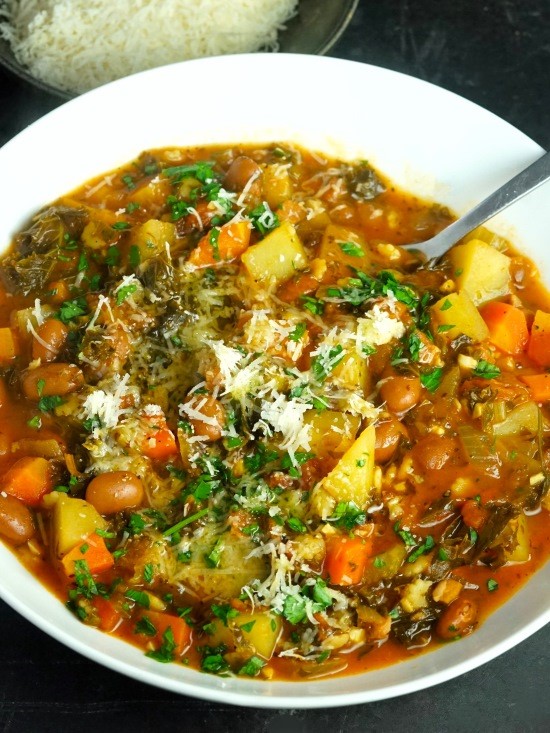
MY MINESTRONE SOUP
The soup you see in this post was made during winter and the ingredients reflect that. As well as onion, garlic, celery and tinned tomatoes, there’s carrot, potato and kale. If I were making this in summer, then there’d certainly be courgette in there and perhaps ripe fresh tomatoes. For the herbs, I’ve used a combination of fresh (rosemary, thyme, sage, parsley) and dried (basil, oregano). In summer though, the emphasis would be on lots of fresh basil.
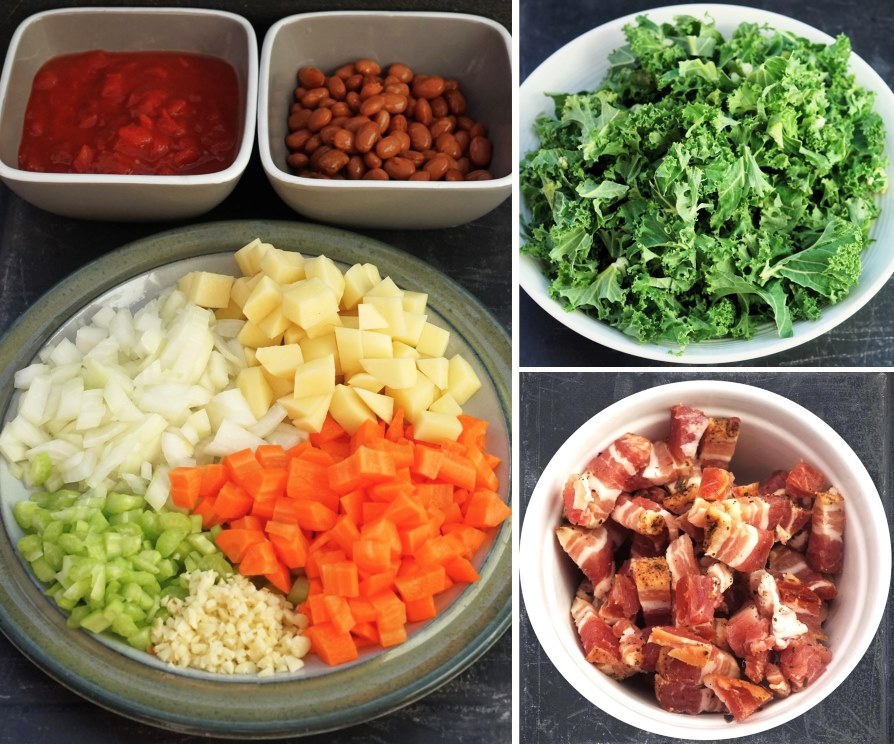
For the beans, I’ve chosen borlotti beans. These are a variety of kidney bean with an earthy flavour. I also like cannellini beans or even chickpeas in Minestrone Soup. While some minestrone contain lots of pasta, I prefer less. Any small pasta works in soup and I’m currently a fan of tiny stelline or ‘little stars’. You could also try orzo or ditalini. But there’s nothing wrong with broken up spaghetti or linguine either.
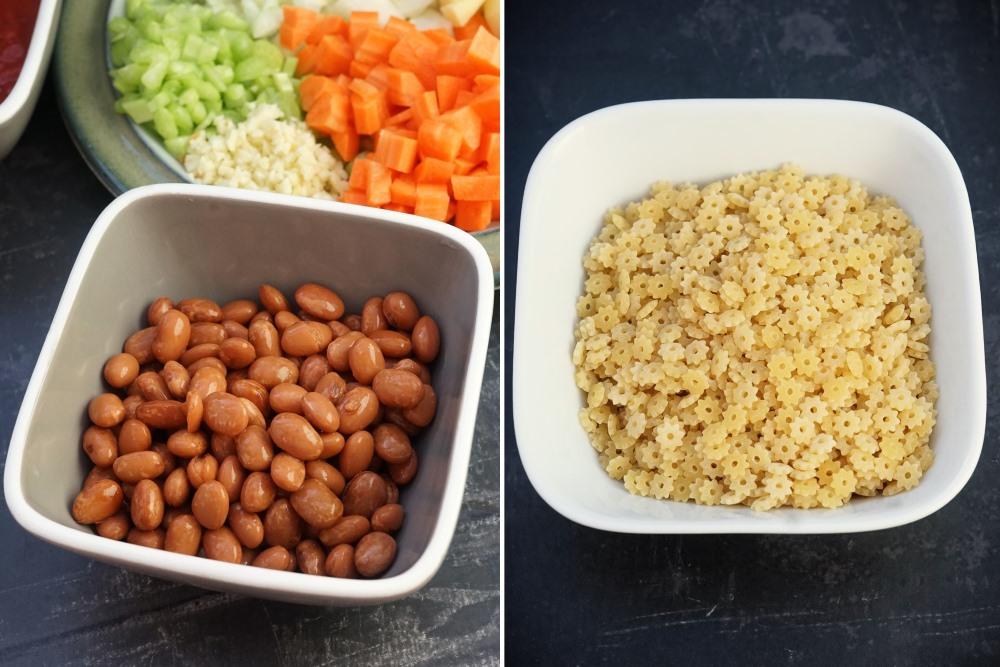
The other ingredients you’ll need are olive oil, salt, black pepper, pancetta or streaky bacon, tomato puree and chicken or vegetable stock. If your tomatoes are a little too acidic then you can add sugar for balance.
You’ll find ingredient amounts and full instructions in the recipe card at the end. But I recommend you read on for an overview and step-by-step images.
HOW TO MAKE MINESTRONE SOUP
Even if you’ve never made any kind of soup before, you’ll find this one very simple. To help things along, I suggest prepping all the ingredients first so they’re to hand as needed.
To start the soup, get yourself a large, lidded pot and brown the pancetta or bacon in olive oil. Then add the chopped onion and celery seasoned with a pinch of salt and some pepper. Cook for around 10 minutes or until the veg are starting to colour. Follow this with the diced carrot and potato plus finely chopped garlic. Stir these around for a minute or two before adding the beans and herbs.
Next, the tomatoes, tomato puree (plus sugar if using) and MOST of the roughly chopped kale goes in. I say ‘most’ because I like to hold back a handful of kale and add it, finely chopped, near the end.
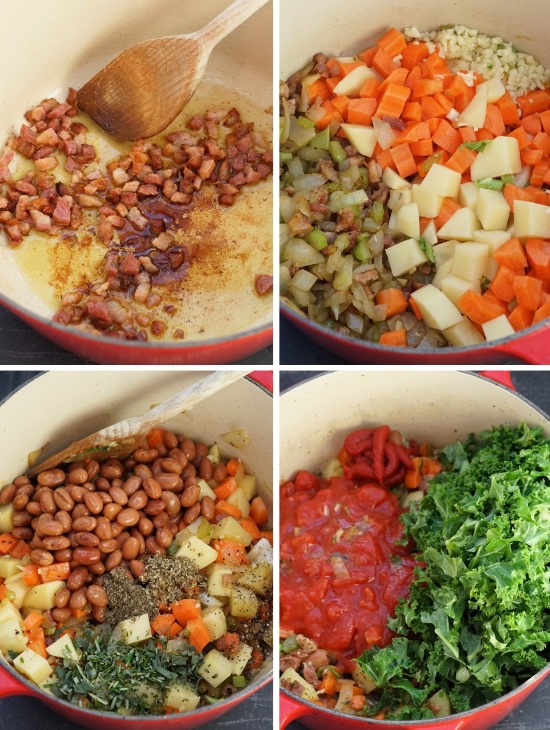
After stirring those in, you can add the stock. Minestrone Soup is traditionally thick and to serve four people you’ll need around 850 ml. Now the lid goes on and everything is brought to a simmer for 12 – 15 minutes. We want the potato and carrot to be almost tender but not completely cooked when we add the pasta. It’s a good idea to check the seasoning again at this point and add more salt, pepper, or sugar if needed.
When the vegetables are almost there, stir in the pasta along with the reserved chopped kale and most of the parsley.
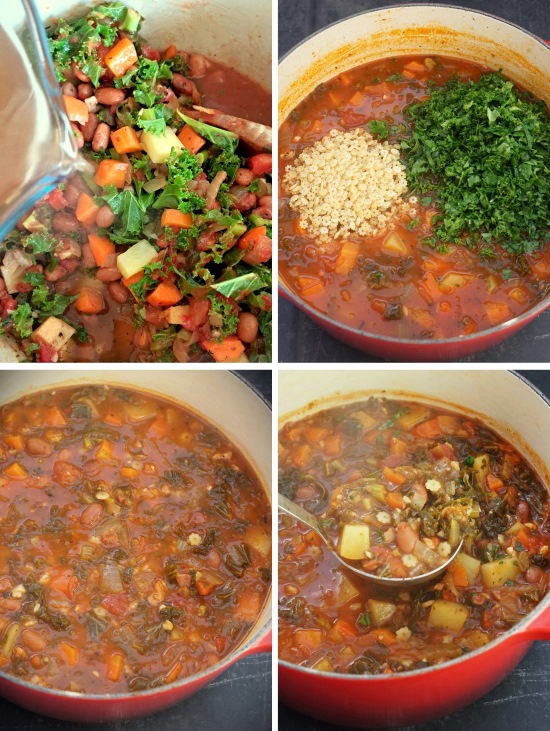
Leave everything to simmer again until the pasta and vegetables are done to your liking. As different pastas soak up varying amounts of liquid you can thin the soup with extra stock if you think it needs it. You’re then ready to serve.
SERVING & STORING
After ladling a portion into each bowl, I sprinkle over reserved parsley to add a lovely bit of green freshness. If you’re feeding especially hungry people, you could serve bread alongside. But I rarely do. Essential though are extra virgin olive oil and grated cheese on the table for everyone to help themselves. The cheese is almost always Parmesan in our house, but you could offer Pecorino or Grana Padano if you like.
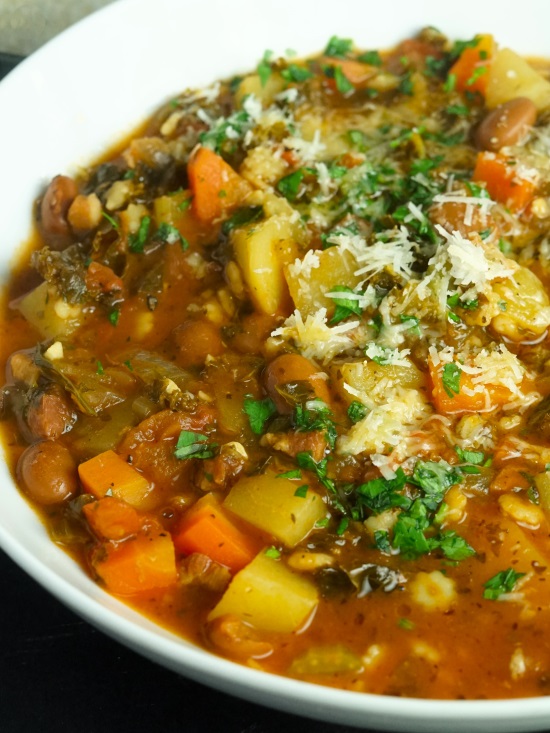
Any leftovers will be fine in the fridge for 2 days or you can freeze the soup. As it sits, the pasta may soak up more of the stock. But all you need do is add a splash of water while reheating on the stove or in a microwave.
Every time I make Minestrone Soup, whether in winter or on cooler summer days, I’m always surprised at how good it is. The ever-changing but simple ingredients come together to create something that never fails to please. Hearty and wholesome but full of flavour, I hope that when you taste all the different elements on your spoon – vegetables, beans, pasta, the herby, tomatoey, garlicky broth – you’ll love it too.
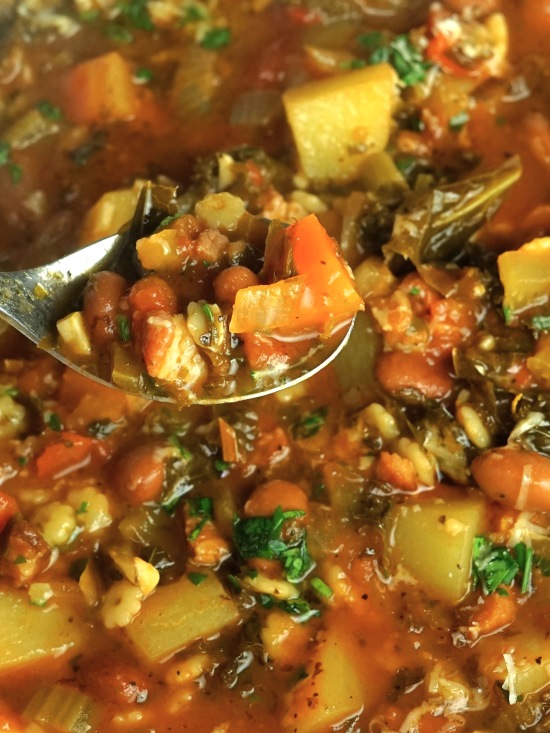
If you’ve made this recipe, or want to share what’s in your minestrone, do leave a comment.

Minestrone Soup
A tasty and hearty one pot meal of vegetables, beans, and pasta in a thick broth of tomato, garlic and herbs.
Infinitely adaptable to what's available, this winter Minestrone includes carrots, potatoes, and kale, but during summer you can swap in courgettes, fresh ripe tomatoes instead of tinned and include lots of fresh basil.
Ingredients
- 2 tbsp olive oil
- 100 g pancetta or smoked streaky bacon diced small (leave out for a vegetarian soup)
- 1 large onion skinned, roughly chopped
- 2 stalks celery finely chopped
- salt and black pepper
- 300 g carrots peeled, diced small (weight before prep)
- 300 g potatoes peeled or not, diced small (weight before prep)
- 1 whole head garlic skinned, finely chopped
- 240 g cooked borlotti, cannellini or other beans (approx. 1 standard tin, drained)
- 2 tsp finely chopped rosemary
- a few sprigs thyme (leaves only)
- a few leaves sage chopped
- 1 tsp dried basil
- 1 tsp dried oregano
- 400 g chopped tomatoes (approx. 1 standard tin)
- 1 tbsp tomato puree
- 1 - 2 tsp sugar optional: only needed if tomatoes are very acidic
- 100 g kale, roughly chopped (weight after tough stems discarded)
- 850 - 1000 ml light stock (chicken or vegetable)
- 3 tbsp parsley finely chopped
- 40 - 60 g small pasta for soup e.g. stelline, orzo, ditalini (or spaghetti/linguine broken into small pieces)
To serve
- extra virgin olive oil
- Parmesan, Pecorino, or Grana Padano cheese finely grated
Instructions
-
Put the olive oil in a large saucepan over medium-high heat.
When hot, stir in the chopped pancetta or bacon and cook until the fat is golden.
-
Turn the heat down to medium and stir in the chopped onion and celery, seasoning with a small pinch of salt and a grind of pepper. Cook, stirring often, until starting to colour (approx. 10 - 12 min).
Stir in the diced carrots, potato, and chopped garlic and cook for another minute or two.
Add the drained beans, the rosemary, thyme, sage, basil and oregano, along with another pinch of salt and grind of pepper then stir well to combine.
Stir in the chopped tomatoes, tomato puree, 1 tsp of the sugar if using, and all but 1 handful of the chopped kale.
Add 850 ml of the stock. This will make a thick soup: you can add a more later if you decide to thin it. You may also need extra liquid if you plan to add more than 40 g of pasta.
Put on a lid, turn up the heat to bring to a boil then turn down to a simmer.
Cook for 12 - 15 minutes or until the vegetables are almost tender.
Taste and add more seasoning if needed.
-
Chop the remaining handful of kale finely and add it to the pot along with most of the parsley (save a little for garnishing), plus the pasta.
Stir well then put the lid back on. Leave to simmer another 6 - 10 minutes (stirring occasionally so the pasta doesn't stick to the bottom of the pot) or until the pasta and vegetables are cooked to your liking. If necessary, thin with a little more stock.
-
Serve the soup with the reserved parsley sprinkled over each bowl and with the extra virgin olive oil and grated cheese on the table for everyone to help themselves.
Leftovers will keep for 2 days in the fridge or can be frozen. Note that the pasta is likely to continue soaking up liquid so you may need to add a little water when reheating on top of the stove or in a microwave.

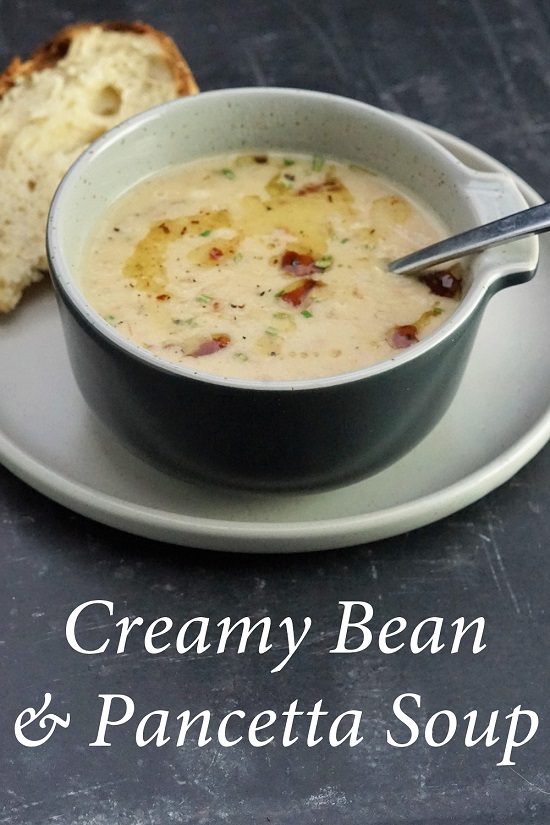
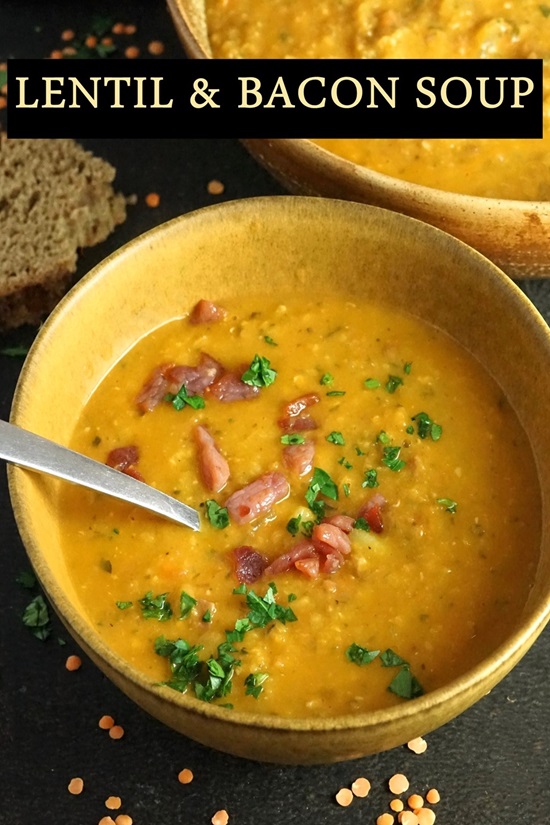
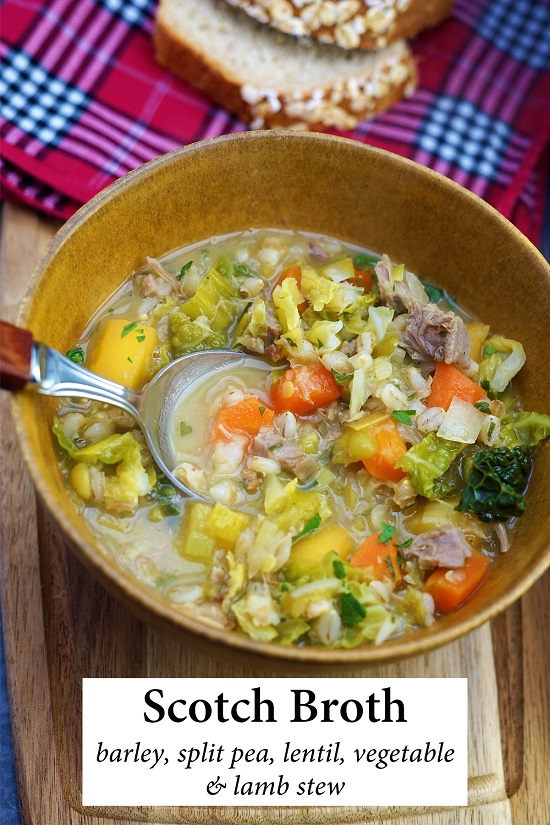

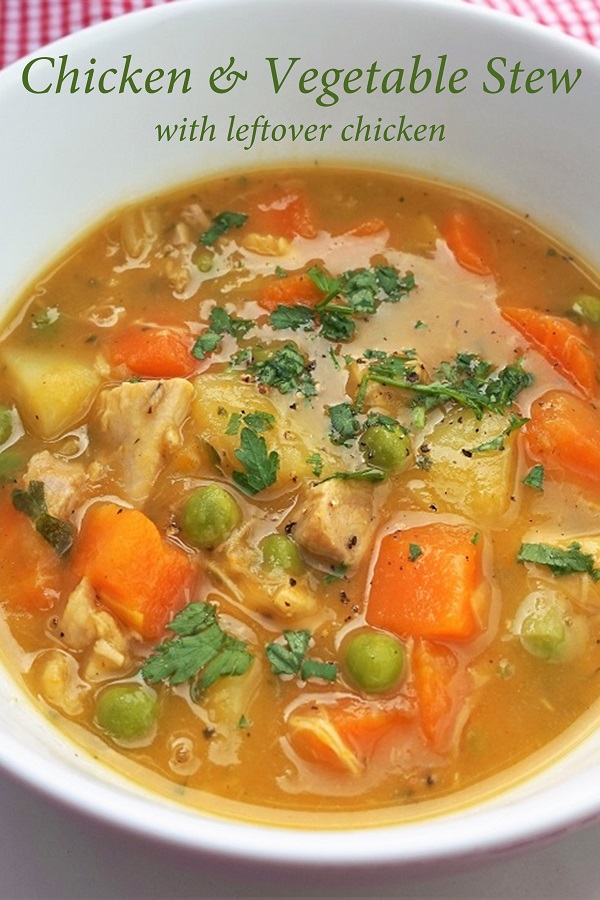

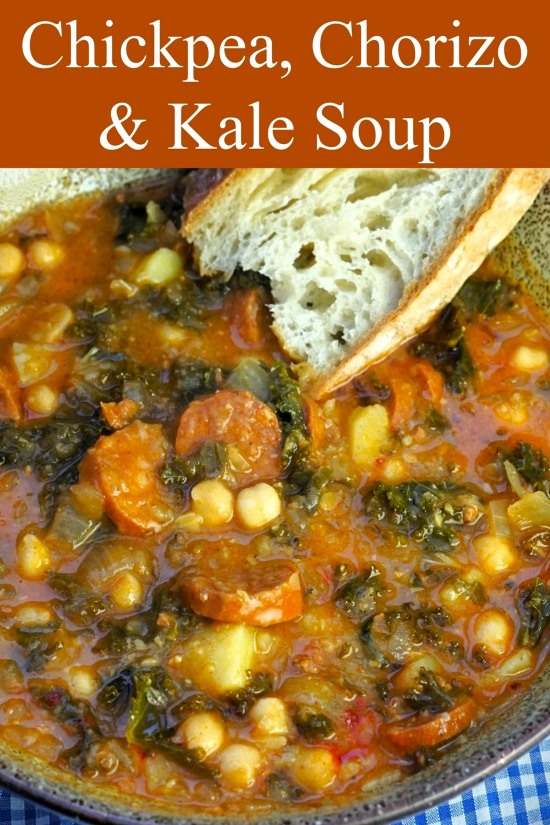
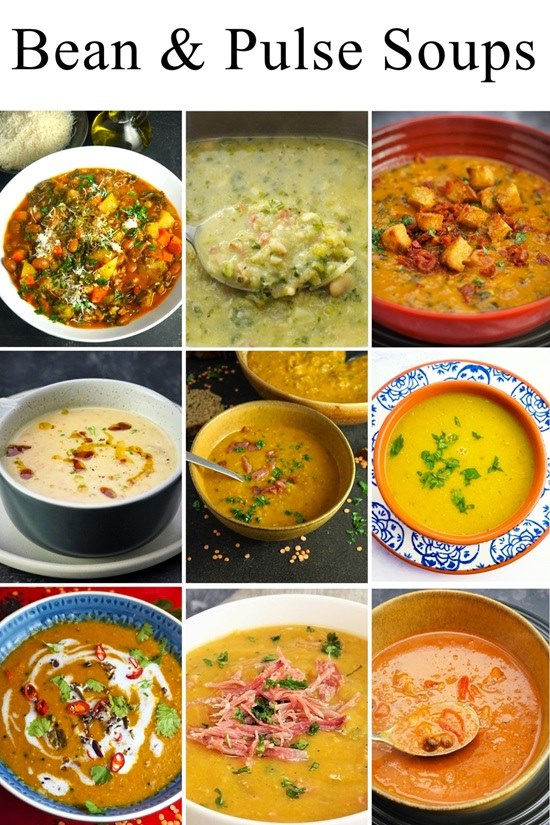
My absolute favourite soup recipe packed full of healthy vegetables and beans. It’s really filling and satisfying, especially with your bread rolls, and I love how easy it is and how adaptable for whatever veg is leftover from my veg box.
Thank you for your great feedback, Jo! I think one of the great things about minestrone is its adaptability too!